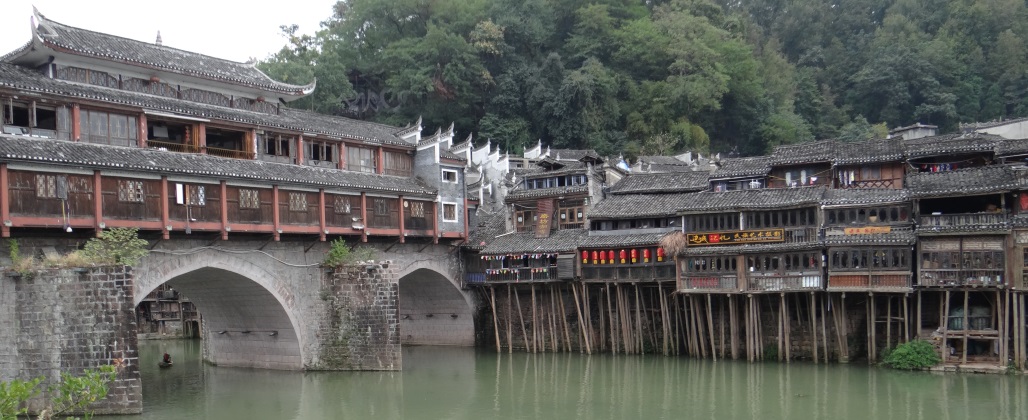A bit overdue, here comes our first travel summary in English, as we just finished our 5th week in China. And this month has been an intense one; we have discovered so many new places, faces, discussions, tastes and lights! Get on board and let us guide you through the beginning of our journey 🙂
You may have a look at the map at the bottom of the article for some geographical reference. The links to the article in French and photo albums are also provided after each stop’s name mentioned in this post.
Everything has gone great so far and we are really enjoying the trip. We left Hong Kong on Oct 13th and just took the MTR (subway) to cross the Chinese border. From there, we boarded a night train for long first ride to Hunan province: our first stop was Fenghuang (post/ photos), a really cute old town located on both banks of a small river. Its narrow streets, old city wall and stilted wood houses give an untimely feeling to the place, even though it was quite touristy, it felt good to just walk around and get lost in this maze.
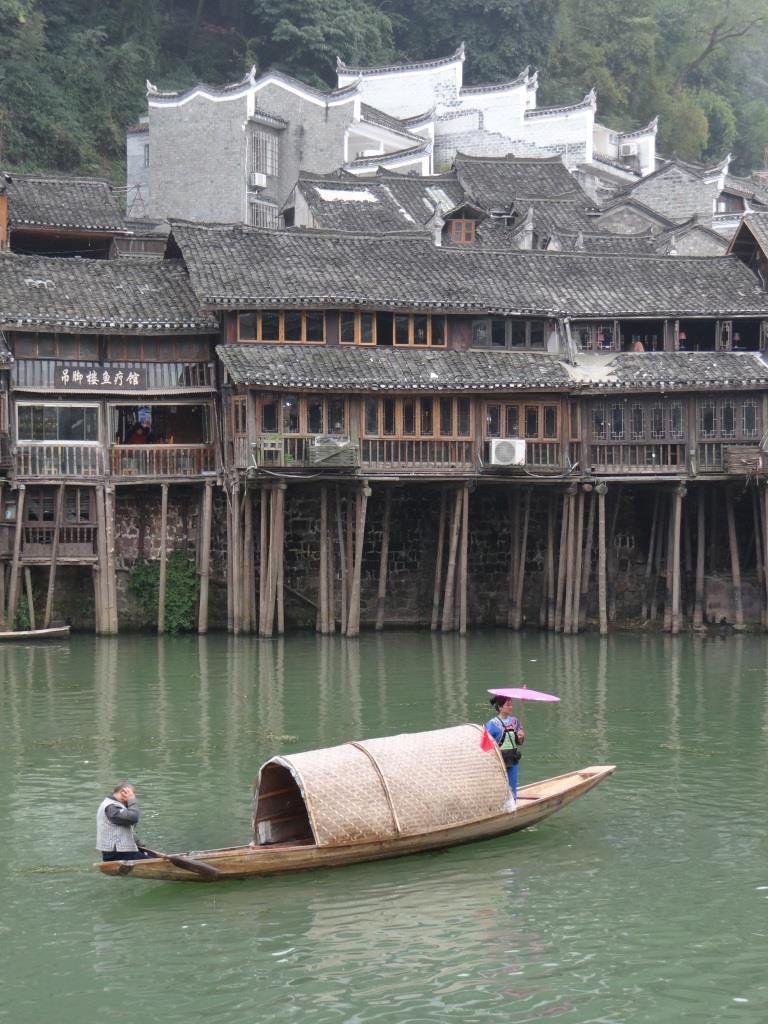
Fenghuang’s old houses along the river
The next step was a sporty one: we spent 3 days hiking in the natural park of Zhangjiajie (post/ photos), and went up and down so many steps to enjoy the beautiful panoramas of the rock formations. What we liked most was that, as soon as one gets a bit off the beaten tracks (understand, more than 500m away from the cable cars), the trails were mostly empty so we had amazing viewpoints to ourselves.
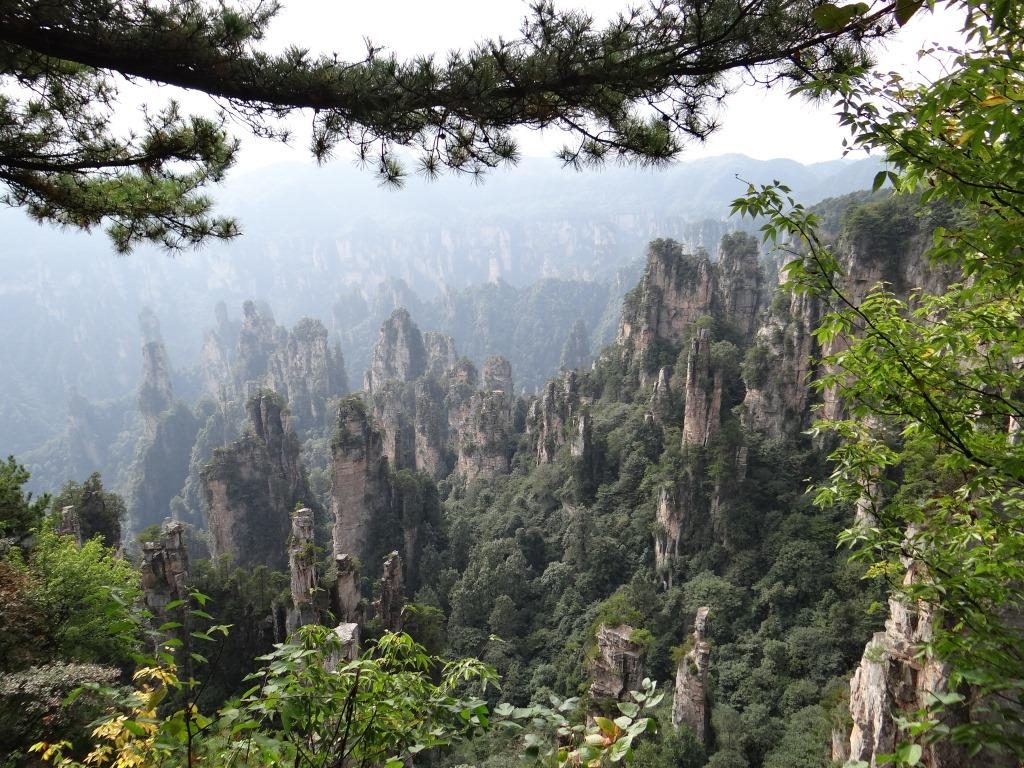
Panorama on the rock formations in Zhangjiajie park
Out of the 2 most famous rivers in China, we had heard so much about the Yangtze and its Three Gorges (post/ photos). We took a very short local cruise from Yichang to Fengjie. Although the water level has increased by more than 100 meters since the construction of the widest dam in the world a few years ago, the gorges remain impressively high, standing tall on both sides of the powerful flows. We stopped twice: to explore the “little” Three Gorges, actually an affluent of the Yangtze where the landscape is even more dramatic, and to visit Baidicheng, the city of the white king.
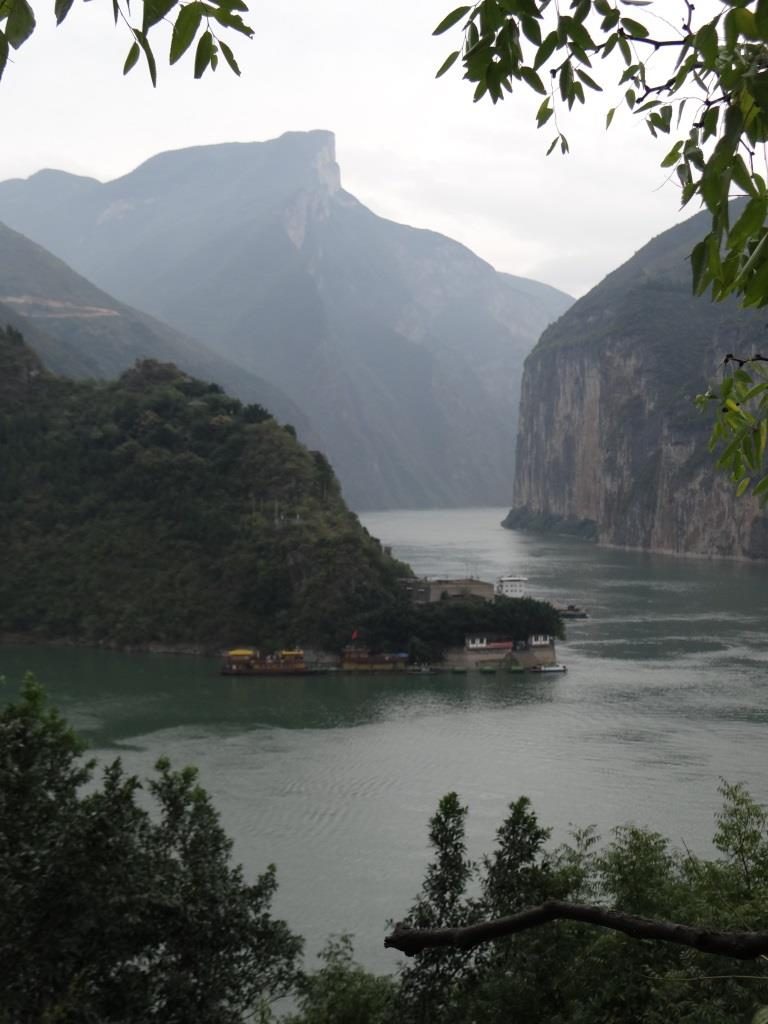
Yangtze river at the entrance of the 3 gorges
Time to stop in our first big city for this Chinese trip: Chongqing (post/ photos)! The historical neighborhoods are located on the slopes of a peninsula on the Yangtze, making it very interesting to discover by foot (and also quite exhausting, again so many stairs!). The whole city seems to be a gigantic construction site, and old houses are continuously replaced by new real estate projects. Still, some charm remains, like in the small streets of Ciqikou or along the piers. Overall, a very illustrative example of the fast-pace change happening in big Chinese cities these days and the spiciest hotpot we have ever had!
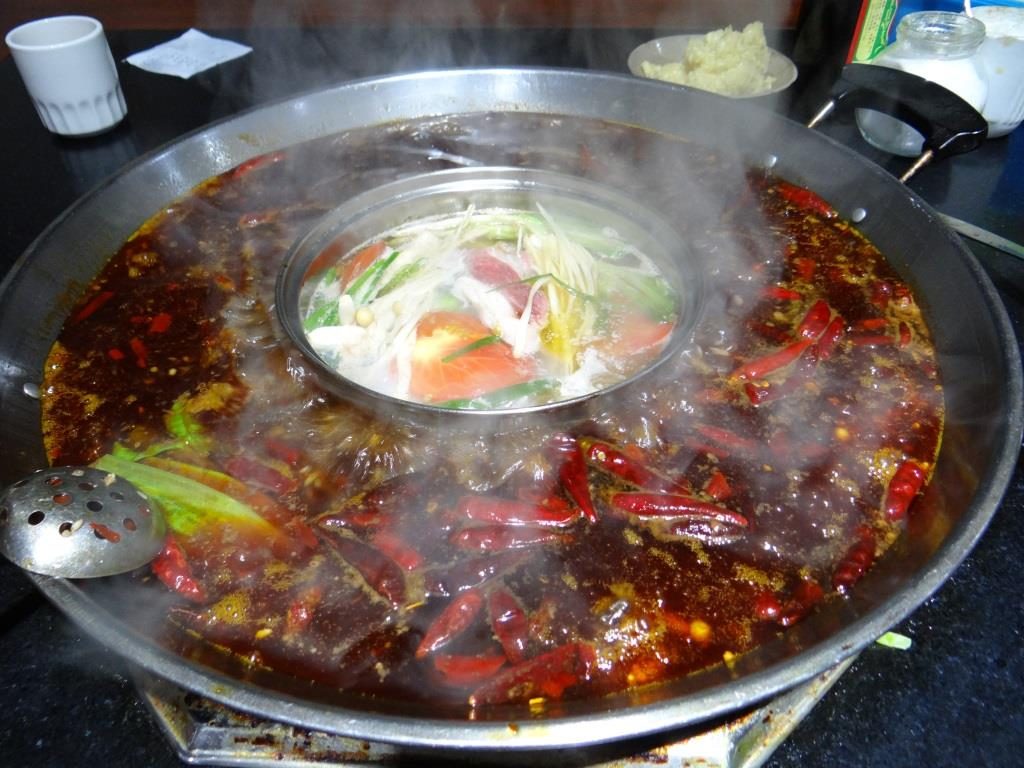
Chongqing spicy hotpot !
We then started to head north, get some elevation and settle for about a week in the mountain city of Songpan (post/ photos). The old city itself has been a bit too drastically renovated but has a nice atmosphere. We had a great horse trip for 3 days, not too intensive, staying with a Tibetan family in a nearby village and riding all the way to see the amazing view of Mount Xuebao from a grassy plain. This was a great first introduction to the Tibetan customs and population that spread across many mountain provinces, especially given that we don’t plan to go to Tibet on this trip!
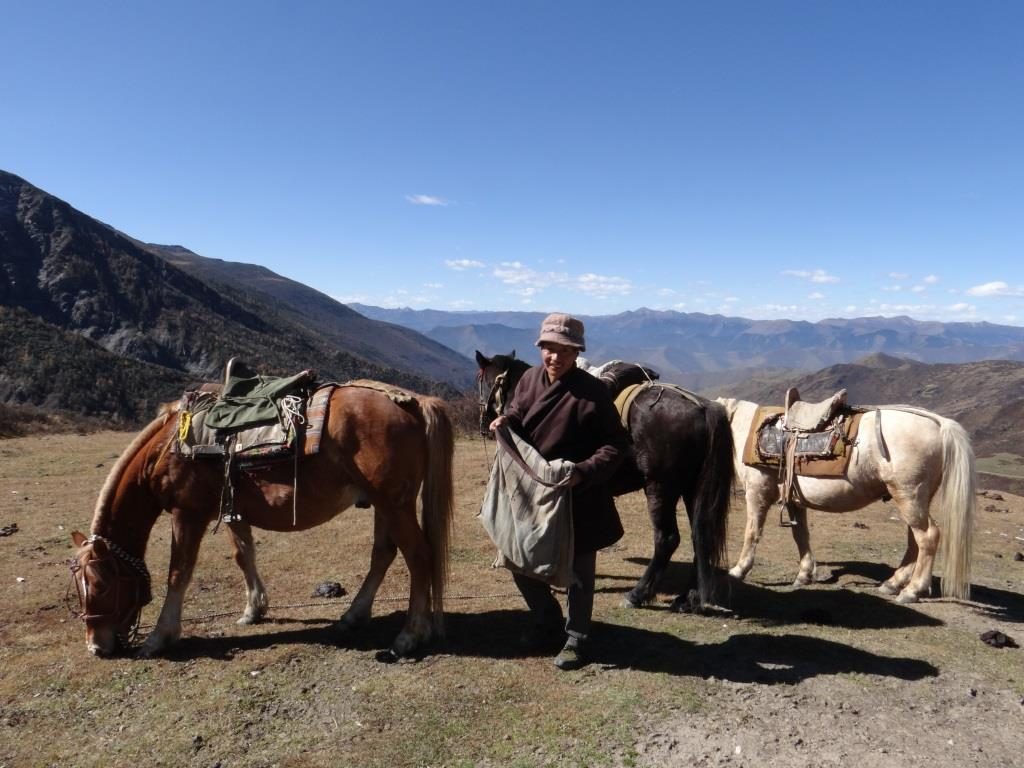
Horse riding with our tibetan guide near Songpan
From there we headed to the natural parks of north Sichuan: Huanglong and Jiuzhaigou (post/ photos 1 / photos 2). Although our hiking experience there was not as rewarding as the previous one, the landscapes were amazing. The autumn colors of the tree leaves were contrasting so strongly with the deep blue and green colors of the lakes and running water: definitely the most beautiful natural palette and lights we have ever seen!
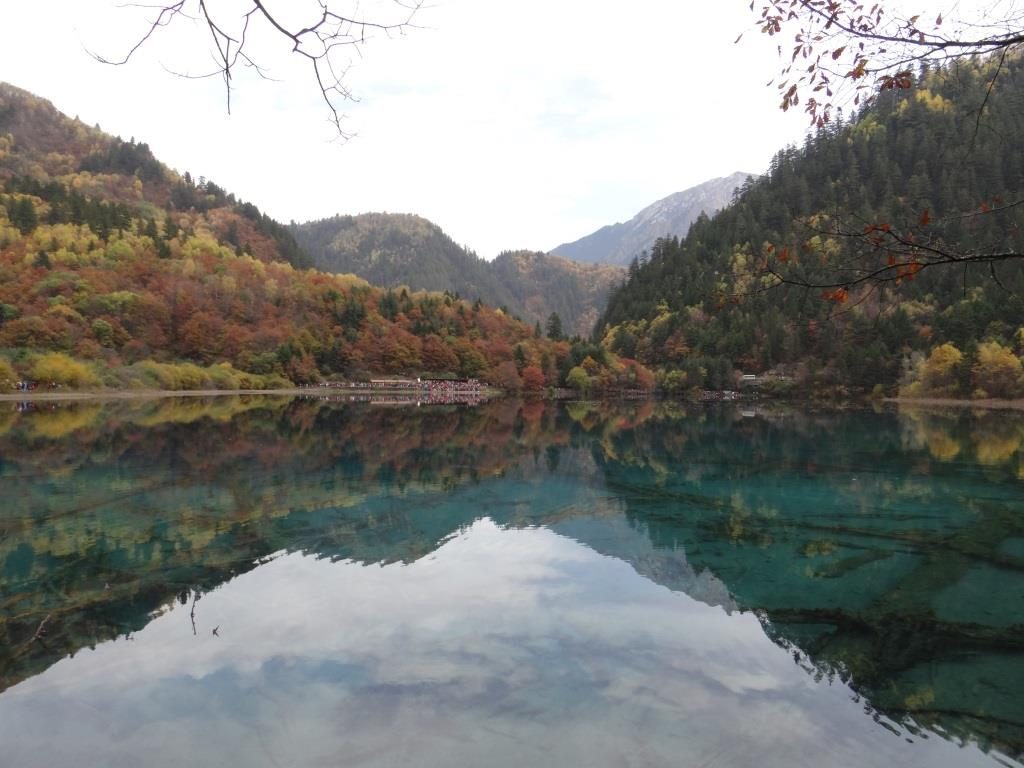
Mirror lake and autumn colors in Jiuzhaigou
Going higher and further north, at the border between Sichuan and Gansu provinces, we reached the nice village of Langmusi (post/ photo). With its two monasteries and breathtaking surroundings, it makes a perfect base to explore the close valleys hiking, as it was really cold but mostly sunny. It took a big part of our time to try four of these walks: in a gorge towards the highest peak, towards the red rocks overlooking the city, a loop to a tiny breeders’ village in the hills and upstream along the river.
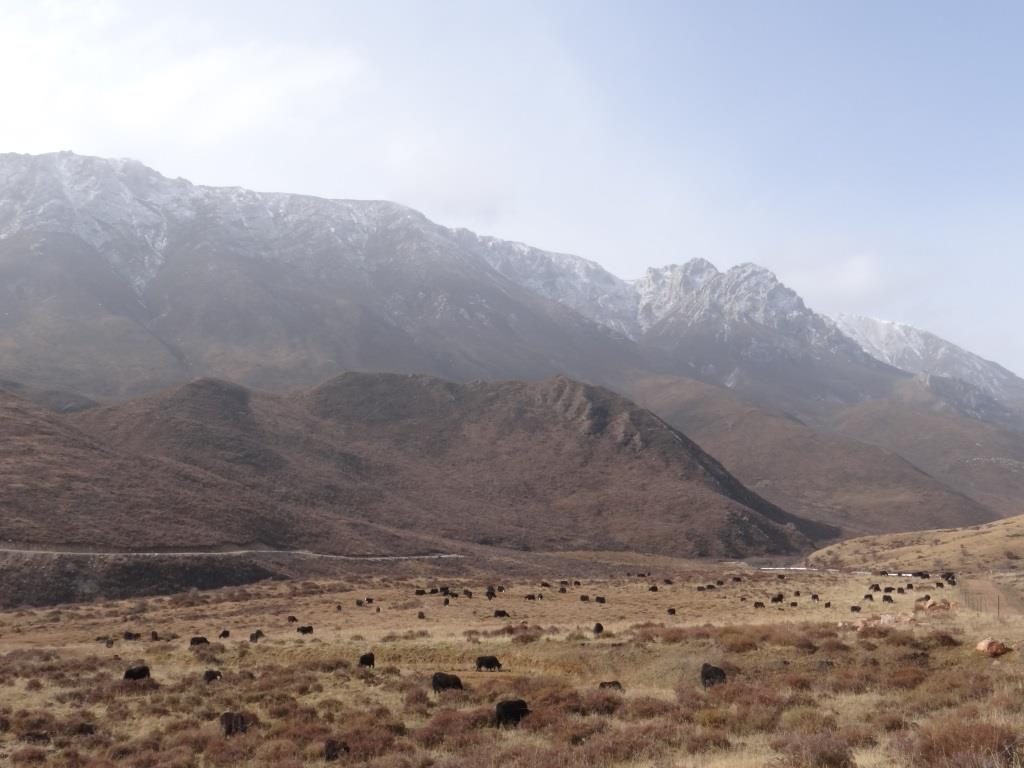
Yacks in the Langmusi landscape
Home to one of the most important Buddhist monasteries of the country, Labrang, the city of Xiahe (post/ photos) lives at the rhythm of the pilgrims going around the kora (path around the temples), turning the prayer mills and passing the beads of their rosaries. Very near are also wide grasslands which we explored by bike, surrounded by mountainous chains, with yaks, sheeps and horses grazing in the fields!
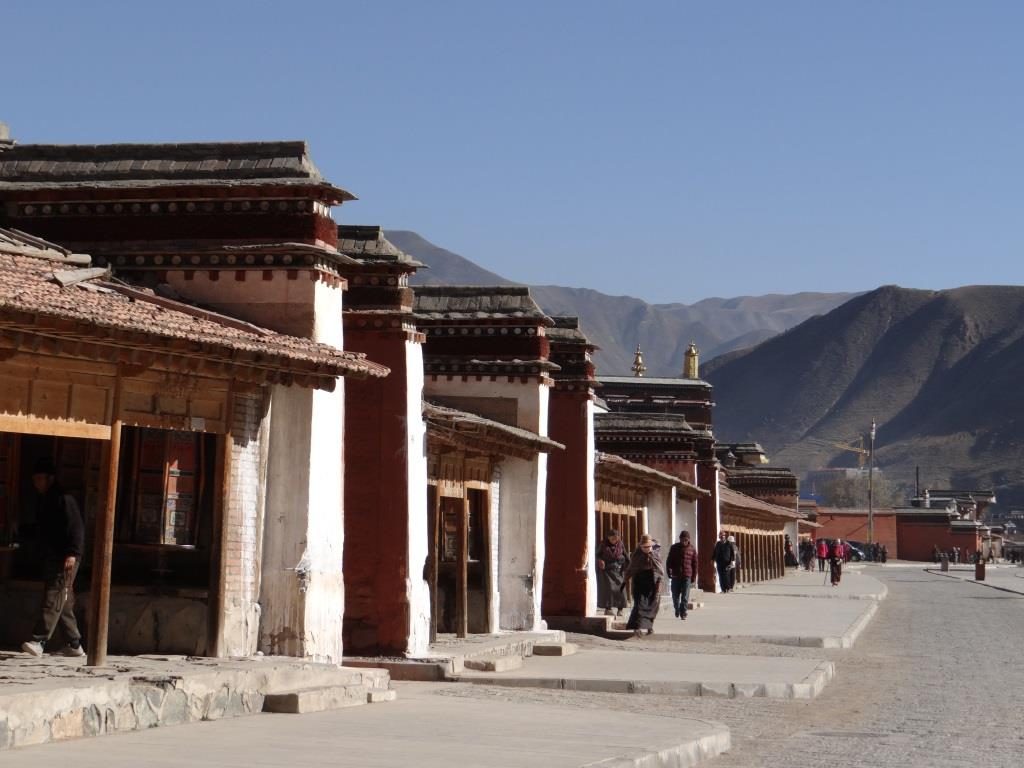
Pilgrims going around the kora at Labrang monastery
We decided to apply for our visa extension in the famous historical capital city of Xi’an (post to come!), so we had a bit more than a week to explore the inner and outer city surrounded by a 14 km wall. We hiked the Hua Shan mountain, one of the 4 Taoists sacred mounts in China and stayed in a freezing cold hostel at the top. We of course finally paid a visit to the world famous terracotta warriors!

Let’s fight, Terracotta warriors !
After an exhausting 18 hours train ride (seated, the sleepers being sold out), we arrived in relaxed Chengdu city. More to come on this chapter later (but stay tuned, it involves an overload of panda cuteness!)
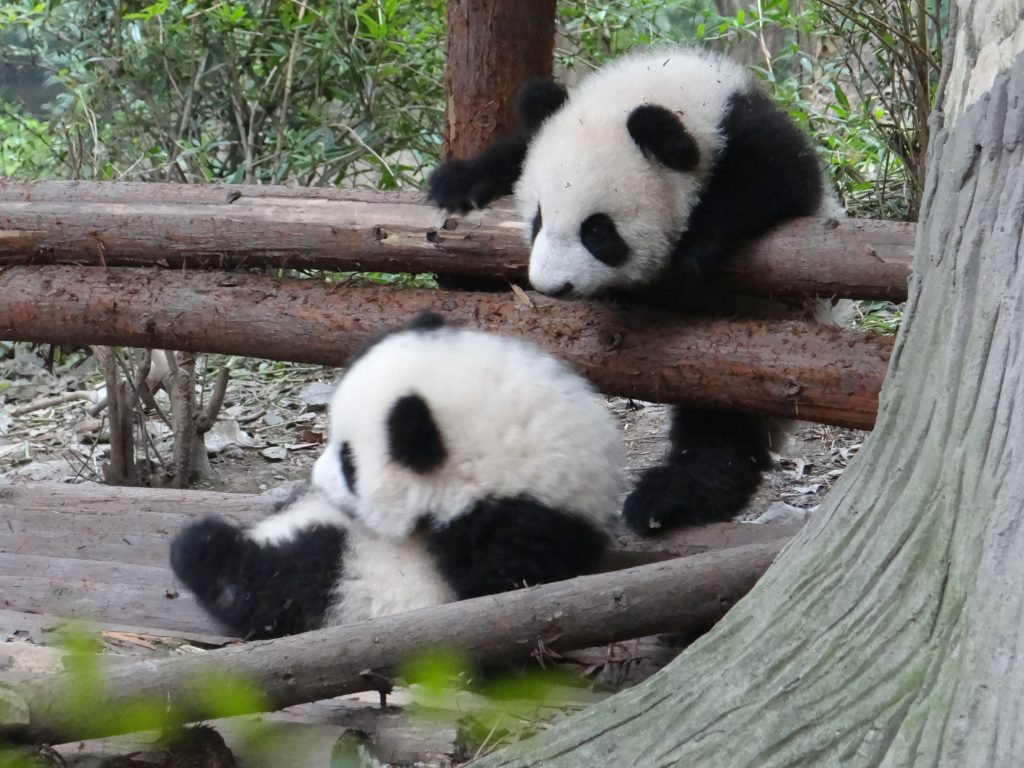
What is cuter than a baby panda? Two baby pandas!
Interactive map
This itinerary has been created thanks to this website: Le planificateur de voyages
